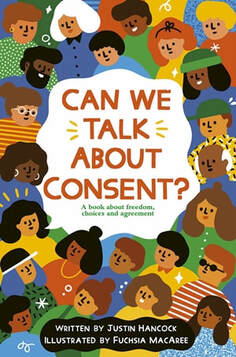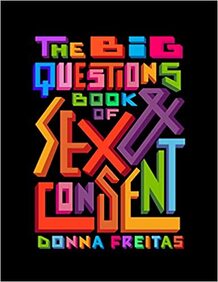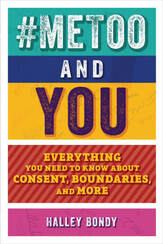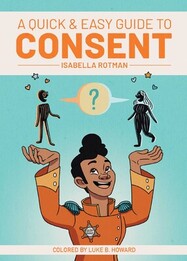Getting Real about Sex: New YA Nonfiction on Consent
Terri Suico


Other features include journal prompts at the end of each chapter, “Advice to Our Younger Selves” by young adult authors, and suggestions for further reading. Overall, The Big Questions Book of Sex and Consent provides a solid introduction to consent grounded in the importance of knowing oneself and being aware of relationships, gender, and sexuality, and it would be a good starting text for readers who want to learn more about these subjects in a supportive and nonjudgmental way.

While the book is marketed toward tween readers (the back cover states that “this book is the tween reader’s one-stop shop for learning all about consent, boundaries, abuse, and more”), the examples, while not graphic, are realistic and can be triggering. Some younger readers might not be ready for encountering these scenarios. However, although the anecdotes might be upsetting, they also emphasize how consent does or does not operate in different scenarios and given different dynamics. The final two chapters (on being an ally and taking action) offer some valuable advice on what readers can do, which is a much-needed reminder of the agency readers have after reading about the myriad examples of abuse. Given the focus on consent as it relates to abuse and harassment, this book would make more sense as a useful supplement to some of the other texts listed here rather than as a starting point. Also, previewing the book and knowing readers’ sensitivity and readiness for these topics are key steps for adults.

| Terri Suico is an associate professor of education at Saint Mary’s College, where she teaches courses in literacy, secondary education methods, and English education. Her scholarly work has been included in several books. Most recently, her chapter on using Loving Vs. Virginia to teach and contextualize the struggle for marriage equality appeared in the book Breaking the Taboo with Young Adult Literature. She currently serves as the book review and interview editor for Study and Scrutiny: Research on Young Adult Literature. |


 RSS Feed
RSS Feed